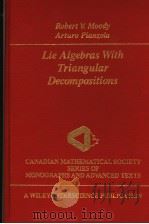《INTRODUCTION TO LIE ALGEBRAS AND REPRESENTATION THEORY》求取 ⇩
| 作者 | 编者 |
|---|---|
| 出版 | SPRINGER-VERLAG |
| 参考页数 | 171 ✅ 真实服务 非骗流量 ❤️ |
| 出版时间 | 1972(求助前请核对) 目录预览 |
| ISBN号 | 0387900527;0387900535;3540900527;7506200392 — 违规投诉 / 求助条款 |
| PDF编号 | 812472848(学习资料 勿作它用) |
| 求助格式 | 扫描PDF(若分多册发行,每次仅能受理1册) |
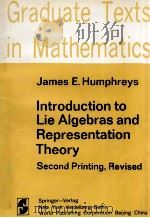
Ⅰ.BASIC CONCEPTS1
1. Definitions and first examples1
1.1 The notion of Lie algebra1
1.2 Linear Lie algebras2
1.3 Lie algebras of derivations4
1.4 Abstract Lie algebras4
2. Ideals and homomorphisms6
2.1 Ideals6
2.2 Homomorphisms and representations7
2.3 Automorphisms8
3. Solvable and nilpotent Lie algebras10
3.1 Solvability10
3.2 Nilpotency11
3.3 Proof of Engel’s Theorem12
Ⅱ.SEMISIMPLE LIE ALGEBRAS15
4. Theorems of Lie and Cartan15
4.1 Lie’s Theorem15
4.2 Jordan-Chevalley decomposition17
4.3 Cartan’s Criterion19
5. Killing form21
5.1 Criterion for semisimplicity21
5.2 Simple ideals of L22
5.3 Inner derivations23
5.4 Abstract Jordan decomposition24
6. Complete reducibility of representations25
6.1 Modules25
6.2 Casimir element of a representation27
6.3 Weyl’s Theorem28
6.4 Preservation of Jordan decomposition29
7. Representations of sI(2,F)31
7.1 Weights and maximal vectors31
7.2 Classification of irreducible modules32
8. Root space decomposition35
8.1 Maximal toral subalgebras and roots35
8.2 Centralizer of H36
8.3 Orthogonality properties37
8.4 Integrality properties38
8.5 Rationality properties.Summary39
Ⅲ.ROOT SYSTEMS42
9.Axiomatics42
9.1 Reflections in a euclidean space42
9.2 Root systems42
9.3 Examples43
9.4 Pairs of roots44
10.Simple roots and Weyl group47
10.1 Bases and Weyl chambers47
10.2 Lemmas on simple roots50
10.3 The Weyl group51
10.4 Irreducible root systems52
11.Classification55
11.1 Cartan matrix of Φ55
11.2 Coxeter graphs and Dynkin diagrams56
11.3 Irreducible components57
11.4 Classification theorem57
12.Construction of root systems and automorphisms63
12.1 Construction of types A-G63
12.2 Automorphisms of Φ65
13.Abstract theory of weights67
13.1 Weights67
13.2 Dominant weights68
13.3 The weight 870
13.4 Saturated sets of weights70
Ⅳ.ISOMORPHISM AND CONJUGACY THEOREMS73
14.Isomorphism theorem73
14.1 Reduction to the simple case73
14.2 Isomorphism theorem74
14.3 Automorphisms76
15.Cartan subalgebras78
15.1 Decomposition of L relative to ad x78
15.2 Engel subalgebras79
15.3 Cartan subalgebras80
15.4 Functorial properties81
16. Conjugacy theorems81
16.1 The group ?(L)82
16.2 Conjugacy of CSA’s(solvable case)82
16.3 Borel subalgebras83
16.4 Conjugacy of Borel subalgebras84
16.5 Automorphism groups87
Ⅴ.EXISTENCE THEOREM89
17.Universal enveloping algebras89
17.1 Tensor and symmetric algebras89
17.2 Construction of ?(L)90
17.3 PBW Theorem and consequences91
17.4 Proof of PBW Theorem93
17.5 Free Lie algebras94
18. Generators and relations95
18.1 Relations satisfied by L96
18.2 Consequences of(S1)-(S3)96
18.3 Serre’s Theorem98
18.4 Application:Existence and uniqueness theorems101
19. The simple algebras102
19.1 Criterion for semisimplicity102
19.2 The classical algebras102
19.3 The algebra G2103
Ⅵ.REPRESENTATION THEORY107
20. Weights and maximal vectors107
20.1 Weight spaces107
20.2 Standard cyclic modules108
20.3 Existence and uniqueness theorems109
21. Finite dimensional modules112
21.1 Necessary condition for finite dimension112
21.2 Sufficient condition for finite dimension113
21.3 Weight strings and weight diagrams114
21.4 Generators and relations for V(λ)115
22. Multiplicity formula117
22.1 A universal Casimir element118
22.2 Traces on weight spaces119
22.3 Freudenthal’s formula121
22.4 Examples123
22.5 Formal characters124
23. Characters126
23.1 Invariant polynomial functions126
23.2 Standard cyclic modules and characters128
23.3 Harish-Chandra’s Theorem130
Appendix132
24. Formulas of Weyl,Kostant,and Steinberg135
24.1 Some functions on H135
24.2 Kostant’s multiplicity formula136
24.3 Weyl’s formulas138
24.4 Steinberg’s formula140
Appendix143
Ⅶ.CHEVALLEY ALGEBRAS AND GROUPS145
25. Chevalley basis of L145
25.1 Pairs of roots145
25.2 Existence of a Chevalley basis145
25.3 Uniqueness questions146
25.4 Reduction modulo a prime148
25.5 Construction of Chevalley groups(adjoint type)149
26. Kostant’s Theorem151
26.1 A combinatorial lemma152
26.2 Special case:sl(2,F)153
26.3 Lemmas on commutation154
26.4 Proof of Kostant’s Theorem156
27. Admissible lattices157
27.1 Existence of admissible lattices157
27.2 Stabilizer of an admissible lattice159
27.3 Variation of admissible lattice161
27.4 Passage to an arbitrary field162
27.5 Survey of related results163
References165
Index of Terminology167
Index of Symbols170
1972《INTRODUCTION TO LIE ALGEBRAS AND REPRESENTATION THEORY》由于是年代较久的资料都绝版了,几乎不可能购买到实物。如果大家为了学习确实需要,可向博主求助其电子版PDF文件(由 1972 SPRINGER-VERLAG 出版的版本) 。对合法合规的求助,我会当即受理并将下载地址发送给你。
高度相关资料
-

- REPRESENTATION THEORY OF FINITE GROUPS AND ASSOCIATIVE ALGEBRAS
- 1962 INTERSCIENCE PUBLISHERS
-
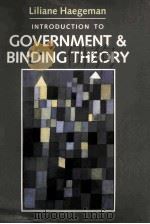
- INTRODUCTION TO GOVERNMENT AND BINDING THEORY
- 1991 BASIL BLACKWELL
-

- Modular Lie algebras
- 1967 Springer-Verlag
-
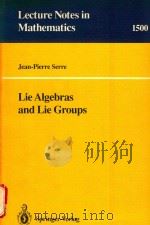
- Lie algebras and Lie groups : 1964 lectures given at Harvard University
- 1992 Springer-Verlag
-
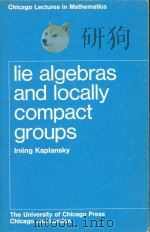
- Lie algebras and locally compact groups
- 1971 University of Chicago Press
-
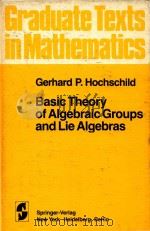
- Basic theory of algebraic groups and Lie algebras
- 1981 Springer-Verlag
-

- Introduction to the representation theory of compact and locally compact groups
- 1983 Cambridge University Press
-
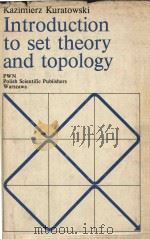
- Introduction to set theory and topology
- 1972 Pergamon Press
-
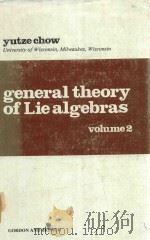
- GENERAL THEORY OF LIE ALGEBRAS VOLUME TWO
- 1978 GORDON AND BREACH
-

- GENERAL THEORY OF LIE ALGEBRAS VOLUME ONE
- 1978 GORDON AND BREACH
-
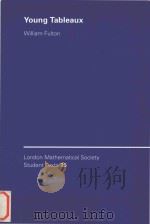
- Young tableaux with applications to representation theory and geometry
- 1997 Cambridge University Press
-

- Suhur algebras and representation theory
- 1993 Cambridge University Press
-

- INTRODUCTION TO SET THEORY AND TOPOLOGY
- 1977 PWN-POLISH SCIENTIFIC PUBLISHERS
-

- CARTESIAN TENSORS
- 1931 AT THE UNIVERSITY PRESS
提示:百度云已更名为百度网盘(百度盘),天翼云盘、微盘下载地址……暂未提供。➥ PDF文字可复制化或转WORD
